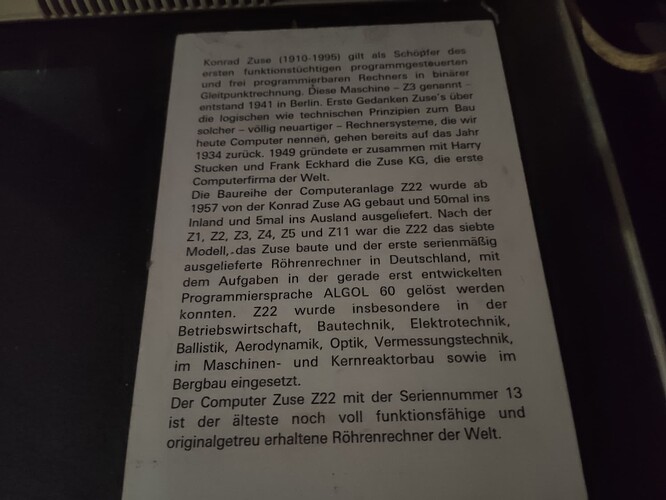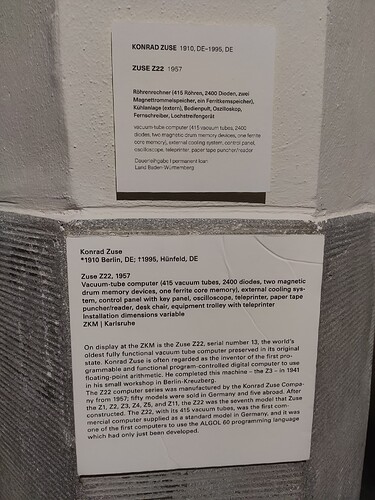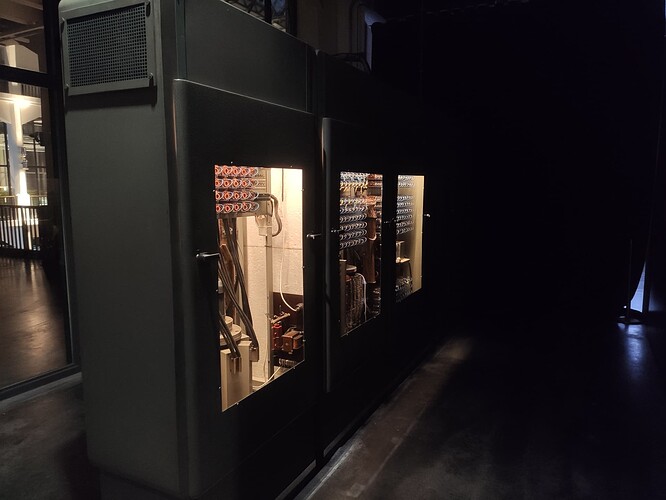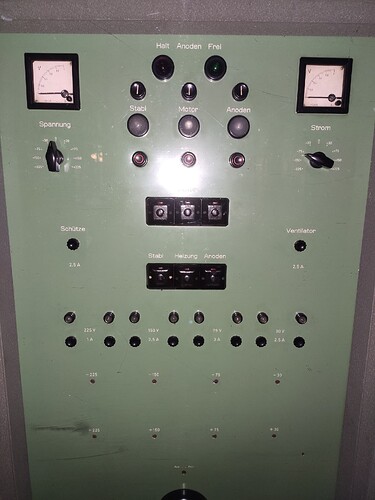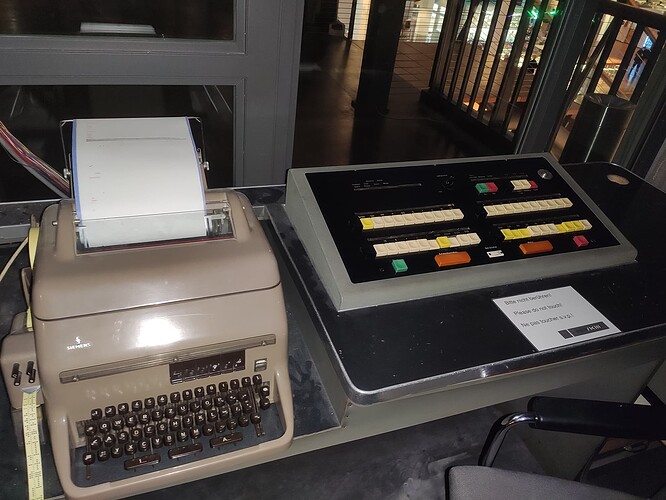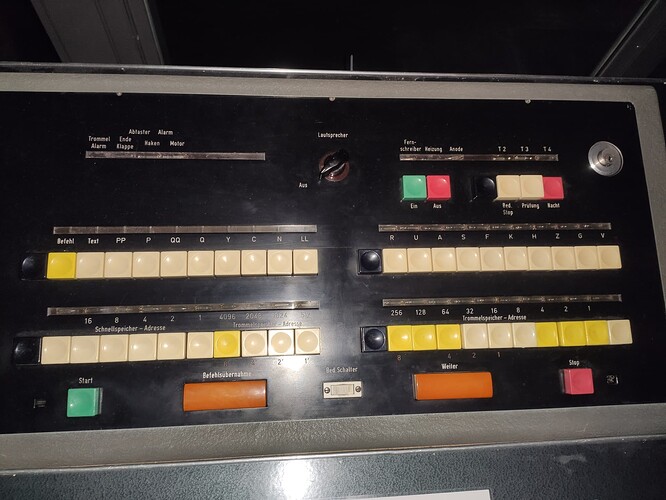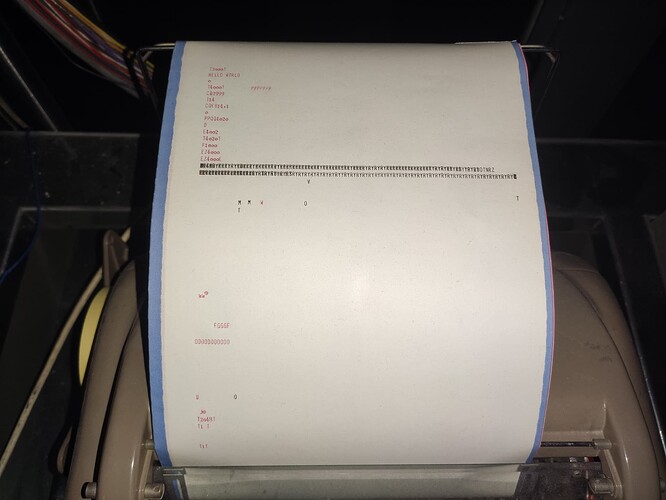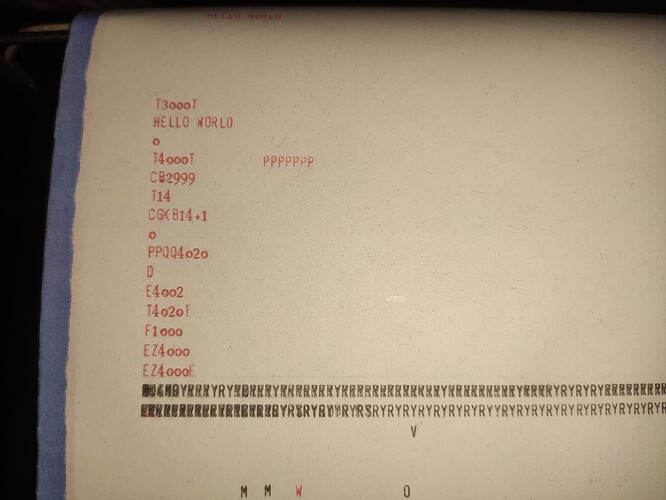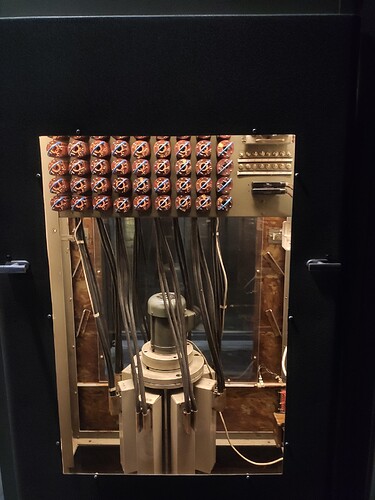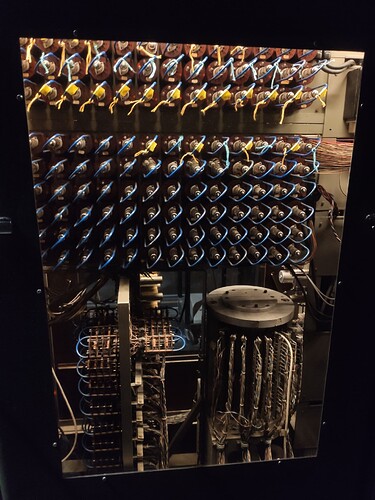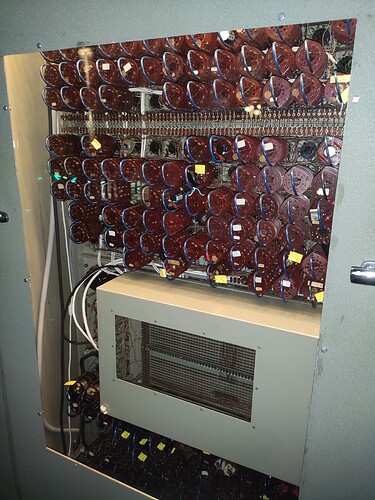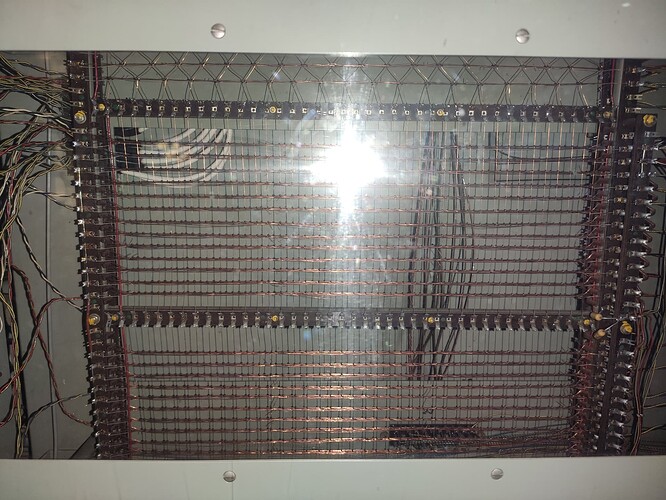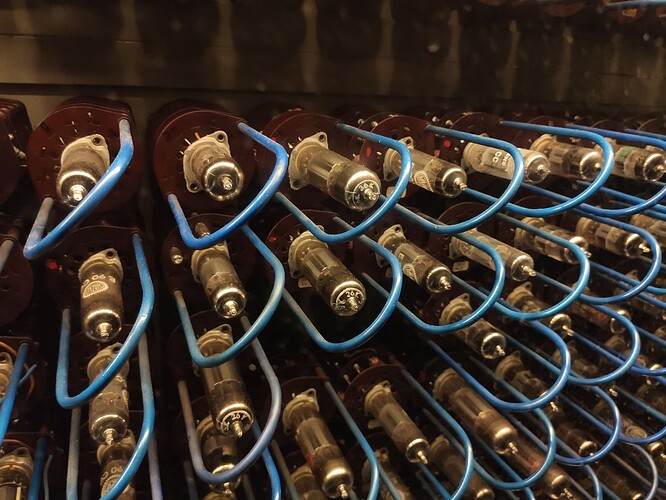Hello! Long time no see.
I recently visited the ZKM (Center for culture and media) in the city of Karlsruhe, Germany.
Its a very cool place and so much more than modern Art. If you are ever for some reason in or close to Karlsruhe, it is definitely worth a visit.
It is located in a former ammunition factory (Operations ended after WW2 for obvious reasons), which is a huge building.
One cool piece they have might interest you. They own the oldest fully functional vacuum tube computer in the world: A Zuse Z22 from 1957.
Before diving into the pictures, I’ll translate the german display plate (There is also an english one with less info on it)
Konrad Zuse (1910-1995) is known as the creator of the first working program-controlled and freely porgrammable Computer with binary floating point calculations. This machine - called Z3 - was created in Berlin in 1941. Initial workings from Zuse considering logical and technical principles for building - completely new at the time - computing systems, which we today call computers, date back as 1934. In 1949 Zuse together with Harry Stucken and Frank Eckhard founded the Zuse KG, the first computer company in the world.
The Z22 computer system was manufactured from 1957 onwards by the Konrad Zuse AG and delivered 50 times to domestic and 5 times to foreign customers. After the Z1, Z2, Z3, Z4, Z5 and Z11 the Z22 was the 7th computer that Zuse built and the first mass-produced vacuum-tube computer in Germany, that could solve tasks in the very recently released ALGOL 60 programming language.
The Z22 was used mainly for accounting, civil engineering, electrical engineering, ballistics, aerodynamics, optics, land surveying, mechanical engineering, nuclear engineering, and mining.
The Z22 computer with serial number 13 is the oldest fully functional and still original vacuum tube computer in the world.
Specs: 415 tubes, 2400 diodes, two drums, ferrite core memory.
Now, the machine has windows cut into its doors so one can look inside. I doubt these are original.
It was kind of a surreal experience, because the machine was tucked in a dark corner in an unrelated exhibition, and completely not roped off or anything. Still, I hope these pictures are decent.
Left side of the machine, with console. No monitor, but a teletype as an output.
Right side of the machine. I would say it is about 2.2 m -ish tall.
Control Panel:
Spannung - Voltage
Strom - Current
Halt - Halt
Frei - Free
Schütze - Contactors
Heizung - Heating
Console.
Trommel Alarm - Drum Alert (Drum Memory related)
Ende Klappe - End Flap
Haken - Jam
Abtaster Alarm - Pickup Alert (Probably Headcrash)
Lautsprecher - Speaker
Fernschreiber - Teletype
Ein - On
Aus - Off
Bed. Stop (Bedienung Stop) - Stop entering
Prüfung - Test
Nacht - Night (Sleep?)
Schnellspeicher- Adresse - Fast memory address (I Assume thats the core rope memory)
Trommelspeicher - Adresse - Drum memory address
Note that their are two drums.
Befehlsübernahme - Confirm instruction(s)
Weiter - Continue
Bed. Schalter - operator switch
Teletype output
Closeup. Seems to have run Hello World last time.
Maybe also some errors, its an old girl that needs constant fixing (Which is being done). The machine isnt always fully functional, and as such not always demonstrated.
Drum Memory
Second Drum and tubes.
Core rope memory and tubes.
Close-up.
Close-up of tube modules.
I have taken more pictures, but these are the best ones. It was cool being near such a piece of computing history. I hope you enjoyed this too.
Thanks for reading!
